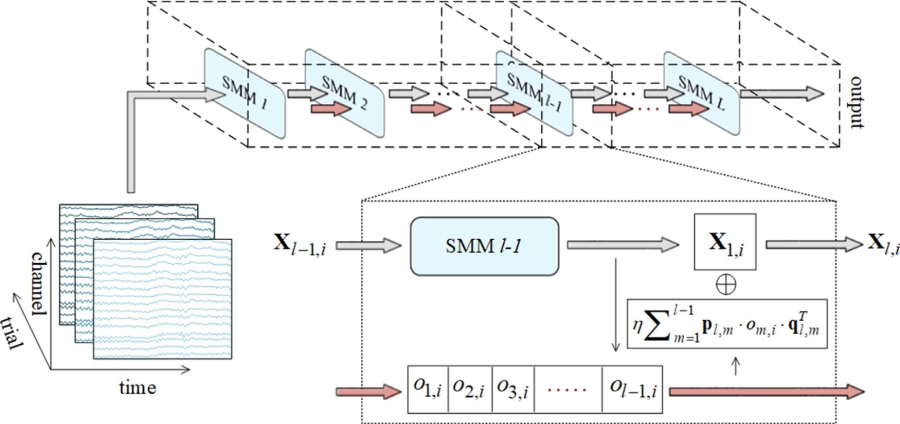Deep Stacked Support Matrix Machine Algorithm Show Superior Performance to Classify Complex Matrix-Form Electroencephalogram Data: Study
Date:13-04-2020 | 【Print】 【close】
An electroencephalogram (EEG) is a recording of brain activity.
The accurate recognition of movement intentions from EEG signals is essential for achieving Motor imagery (MI)-based BCIs.
Among the rapid development of pattern recognition algorithms, various classification methods have been widely used for EEG recognition, support matrix machine (SMM) showed unique advantage for it can grasp the structural information of feature matrices.
Researchers from the Shenzhen Institutes of Advanced Technology (SIAT) of the Chinese Academy of Sciences proposed a novel deep architecture that used SMM as its basic module and random shift as the stacking element, named deep stacked support matrix machine (DSSMM), the study was published in Computer Methods and Programs in Biomedicine.
The proposed DSSMM was constructed in a layer-by-layer manner using SMM as its basic module, in which the random projections of weak predictions from the previous layers SMM were combined with the original feature matrices to transform the manifold of single trial EEG data.
In this way, DSSMM combined the virtue of SMM with the powerful feature representation derived from the deep architecture, made it suitable for EEG classification. Besides, DSSMM involved an efficient feed-forward instead of parameter fine-tuning using back-propagation, where each layer was a convex optimization problem.
Experimental results demonstrated that, compared with the other competitive methods included k-Nearest Neighbor (KNN), Convolutional neural networks (Convnet), Support Vector Machine (SVM), Random Recursive Linear SVM (R2SVM), Bilinear SVM (BSVM) and SMM, the DSSMM gave superior classification performance on three public EEG datasets and a self-collected EEG dataset.
This was the first attempt to incorporate a matrix classification model into the deep architecture. The team will devote to improve the generalization capability of DSSMM in scenes with insufficient EEG data in the future.

Figure. Flowchart of DSSMM for MI-based EEG classification. (Image by SIAT)
Media Contact:
ZHANG Xiaomin
Email: xm.zhang@siat.ac.cn